Abstract
A case-control study was conducted to determine the influence of non-workplace factors on risk of respiratory disease among workers at the Owens-Corning Fiberglas plant in Newark, Ohio. Cases and controls were drawn from a historical cohort mortality study conducted on behalf of the Thermal Insulation Manufacturers Association (TIMA) of workers employed at Newark for at least one year between 1 January 1940 and 31 December 1963 and followed up to the end of 1982. The TIMA study reported a statistically significant increase in respiratory cancer (compared with national death rates). Interviews were completed for 144 lung cancer cases and 299 matching controls and 102 non-malignant respiratory disease cases and 201 matching controls. Unadjusted odds ratios (ORs) were used to assess the association between lung cancer or non-malignant respiratory disease and birthplace, education, income, marital state, smoking with a duration of six months or more, age at which smoking first started, and duration of smoking. Only the smoking variables were statistically significant. For lung cancer, of the variables entered into a conditional logistic regression model, only the smoking OR of 23.4 (95% CI 3.2-172.9) was statistically significant. For non-malignant respiratory disease no variables entered into the final model were statistically significant. Results of the interview portion of our case-control study clearly indicate that smoking is the most important non-workplace factor for risk of lung cancer in this group of workers. Smoking does not seem to play as important a part, however, for non-malignant respiratory disease. Prevalence of cigarette smoking at the Newark plant was estimated for birth cohorts by calendar year. Corresponding data for the United States were compiled from national smoking surveys. Prevalence of cigarette smoking for Newark in 1955 appears to be sufficiently greater than the corresponding United States data in 1955 to suggest that some of the previously reported excess of lung cancer for Newark based on United States mortality may be accounted for by differences in the prevalence of cigarette smoking between white men in Newark and those in the United States as a whole.
Full text
PDF
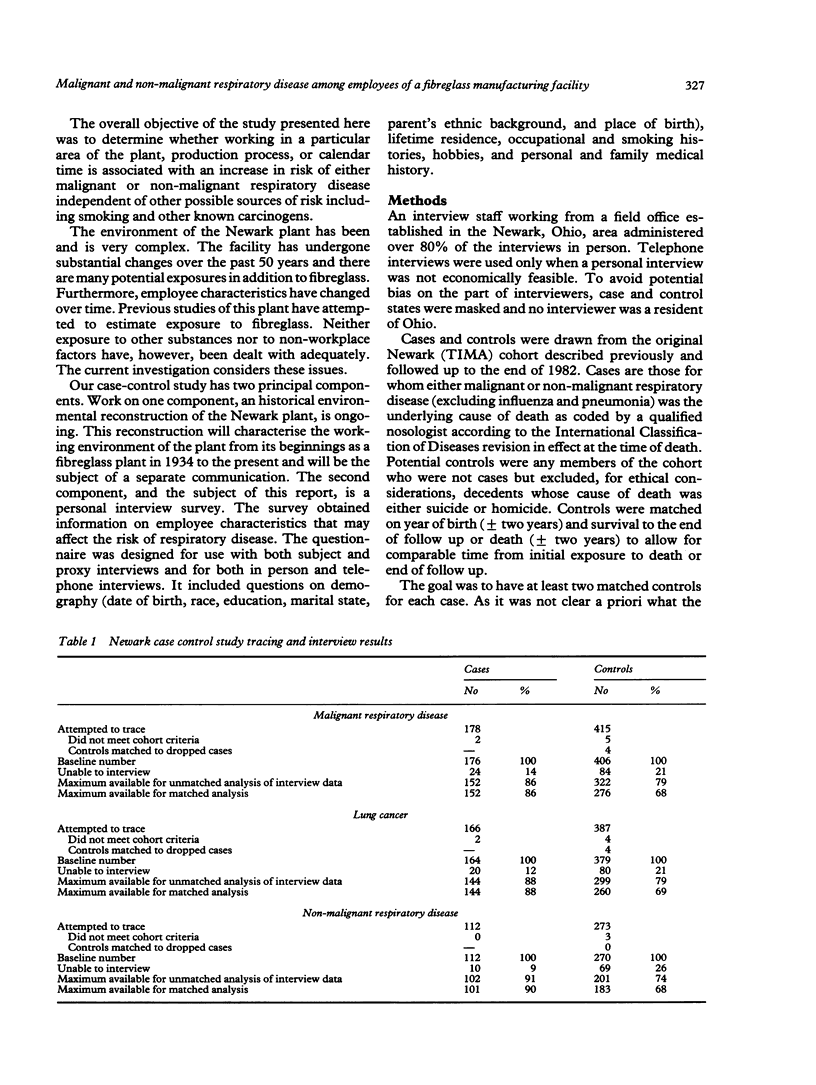
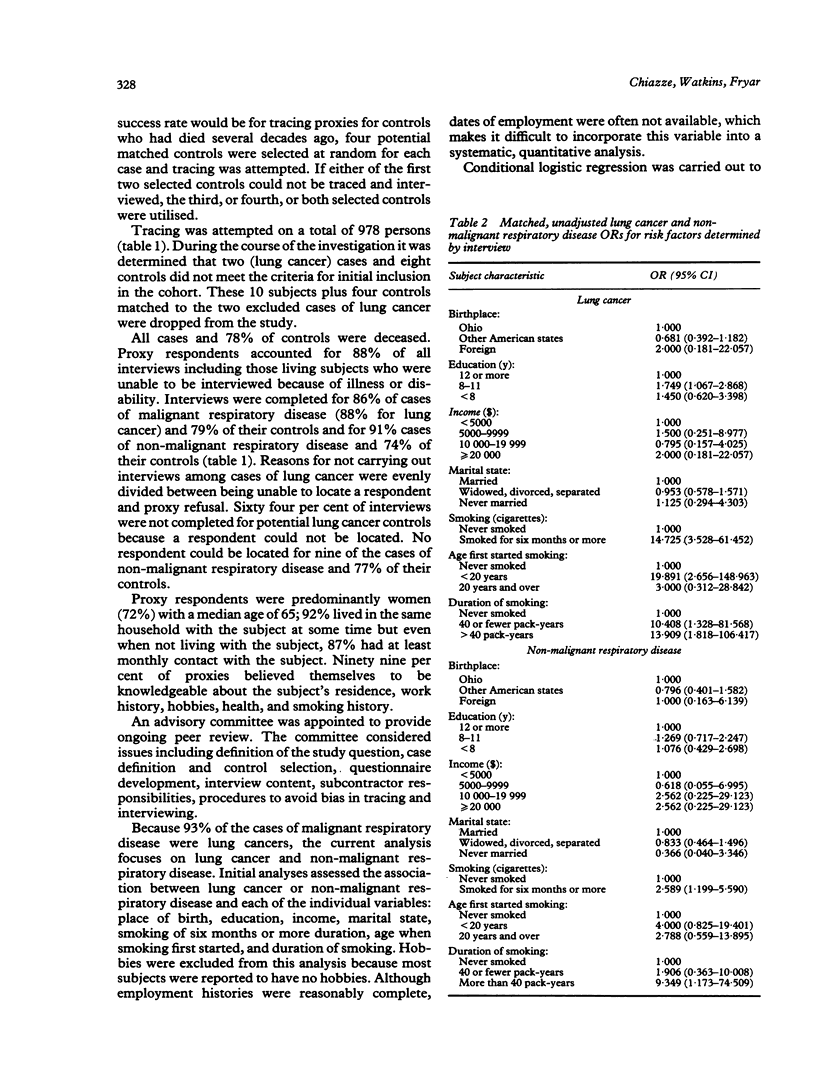
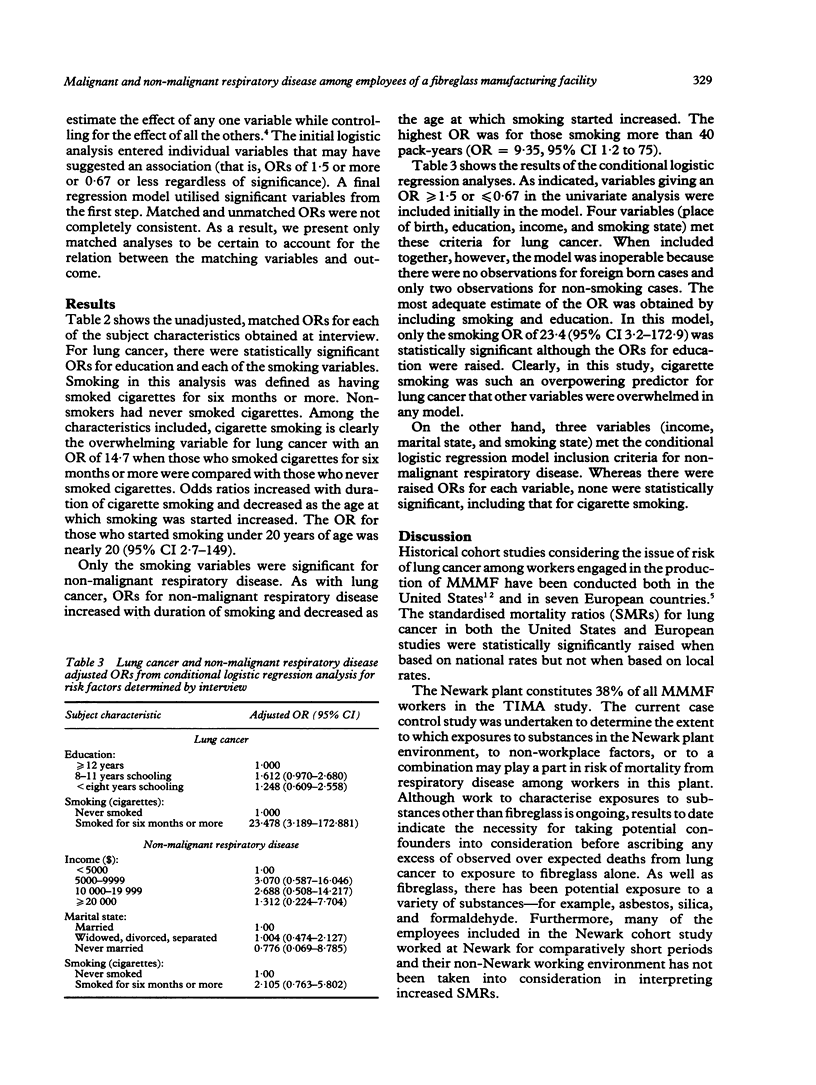
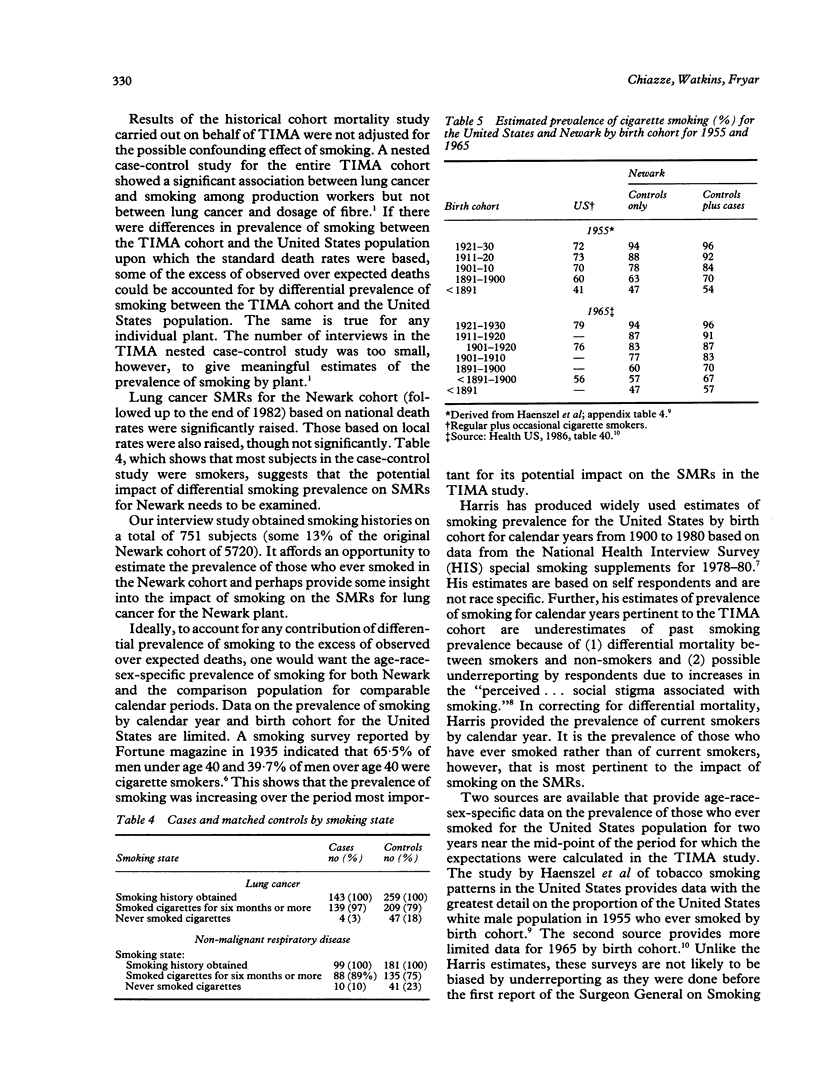
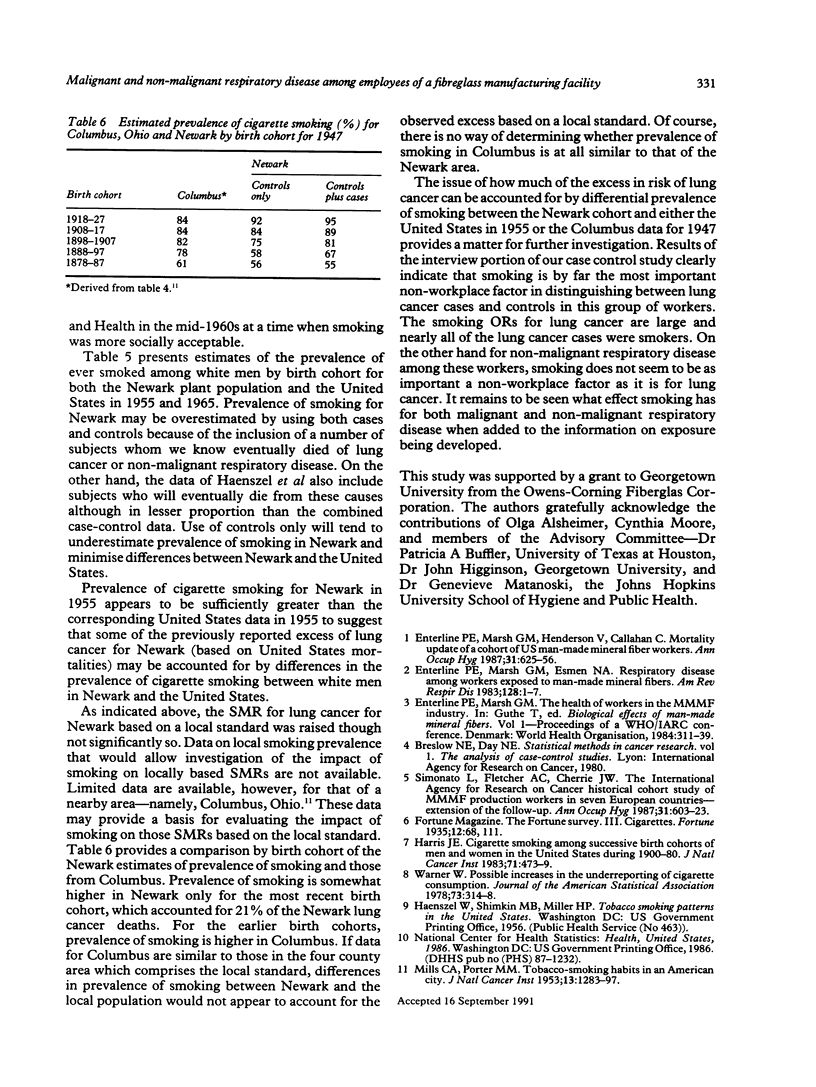
Selected References
These references are in PubMed. This may not be the complete list of references from this article.
- Enterline P. E., Marsh G. M., Esmen N. A. Respiratory disease among workers exposed to man-made mineral fibers. Am Rev Respir Dis. 1983 Jul;128(1):1–7. doi: 10.1164/arrd.1983.128.1.1. [DOI] [PubMed] [Google Scholar]
- Enterline P. E., Marsh G. M., Henderson V., Callahan C. Mortality update of a cohort of U.S. man-made mineral fibre workers. Ann Occup Hyg. 1987;31(4B):625–656. doi: 10.1093/annhyg/31.4b.625. [DOI] [PubMed] [Google Scholar]
- Harris J. E. Cigarette smoking among successive birth cohorts of men and women in the United States during 1900-80. J Natl Cancer Inst. 1983 Sep;71(3):473–479. [PubMed] [Google Scholar]
- MILLS C. A., PORTER M. M. Tobacco-smoking habits in an American city. J Natl Cancer Inst. 1953 Apr;13(5):1283–1297. [PubMed] [Google Scholar]
- Simonato L., Fletcher A. C., Cherrie J. W., Andersen A., Bertazzi P., Charnay N., Claude J., Dodgson J., Esteve J., Frentzel-Beyme R. The International Agency for Research on Cancer historical cohort study of MMMF production workers in seven European countries: extension of the follow-up. Ann Occup Hyg. 1987;31(4B):603–623. doi: 10.1093/annhyg/31.4b.603. [DOI] [PubMed] [Google Scholar]


